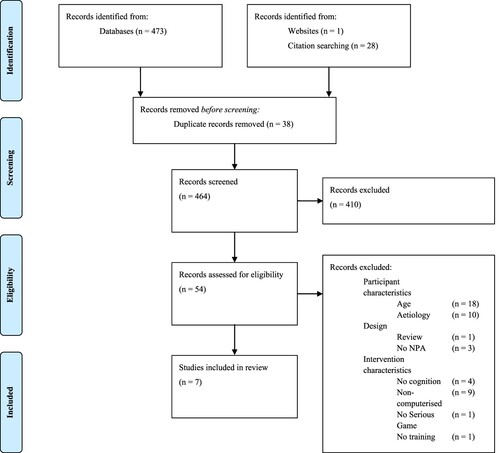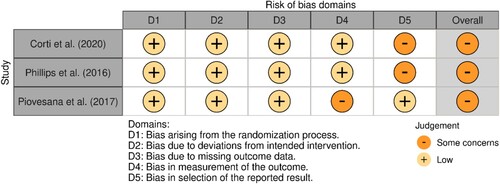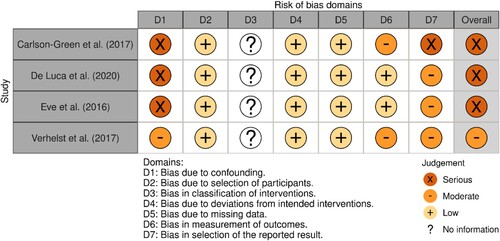Figures & data
Table 1. Summary of study characteristics (level of function).
Table 2. Summary of study characteristics (level of activities).
Figure 1. Flow diagram of study selection in accordance with the PRISMA statement (Moher et al., Citation2015).

Table 3. Summary of findings (level of function).
Table 4. Summary of findings (level of activities).
Figure 2. Overview of risk of bias for the randomised controlled trials (ROB 2).
Note: D2 (Bias due to deviations from the intended intervention) – intervention effect of interest to the review author was the effect of assignment to the intervention at baseline (i.e., the “intention-to-treat effect”).

Figure 3. Overview of risk of bias for the non-randomised controlled trials (ROBINS).
Note: D3 (Bias in classification of interventions) not included due to single condition; D4 (Bias due to deviations from the intended intervention) – intervention effect of interest to the review author was the effect of assignment to the intervention at baseline (i.e., the “intention-to-treat effect”).

